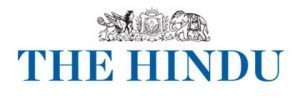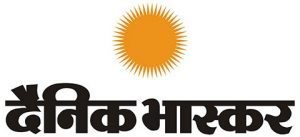(05-01-2022) समाचारपत्रों-के-संपादक

Date:05-01-22
No Freebie Lunch
Opposition is promising cash and free services to voters. Where’s the money for all this?
TOI Editorials
 With state elections nearing, it’s open season for tempting the electorate with sops. And no party’s holding back. Punjab Congress chief Navjot Sidhu has promised financial incenti-ves ranging from Rs 5,000 to Rs 20,000 for girl children in Classes 5 to 12, free e-scooters for female college goers and interest-free loans for their higher studies besides Rs 2,000 per month for women homemakers. Earlier, AAP in Punjab, Goa and Uttarakhand had promised Rs1,000 per month for all women. In UP, SP adapted AAP’s playbook by announcing free electricity for irrigation and first 300 units free for households.
With state elections nearing, it’s open season for tempting the electorate with sops. And no party’s holding back. Punjab Congress chief Navjot Sidhu has promised financial incenti-ves ranging from Rs 5,000 to Rs 20,000 for girl children in Classes 5 to 12, free e-scooters for female college goers and interest-free loans for their higher studies besides Rs 2,000 per month for women homemakers. Earlier, AAP in Punjab, Goa and Uttarakhand had promised Rs1,000 per month for all women. In UP, SP adapted AAP’s playbook by announcing free electricity for irrigation and first 300 units free for households.
Despite governing at the Centre and in most poll-bound states, BJP too boasts significant cash bonanzas transferred in UP: a Rs 2,000 PM-Kisan tranche, Rs 1,000 crore for self-help groups targeting around 16 lakh women, Rs 1,100 to primary school students for buying school gear, and Rs 2,000 to1lakh girl children. True, some cash transfers are good policy, the PM-Kisan being an example. And some freebies, like Tamil Nadu’s Amma Canteens, addressed a real need. But most are just cash thrown at groups with no or little positive impact. Some cash for girl students will help far less than more education options, for example. And many freebies have massively distortionary effects.
Take former Punjab CM Rajinder electricity scheme for tubewell owners in 1996. It didn’t help her win but institutionalised a policy that depletedgroundwater, encouraged paddy cultivation and vitiated not just farm economies but also air quality and power discoms’ viability. AAP’s free power-water offerings in Delhi have less negative impact, thanks to the city-state’s surplus budgets and predominantly urban economy. But practically no other state has such advantages.
Most states have dodgy finances, and are always asking for more central support. Only recently, some states asked that GST compensation scheme be extended for another five years beginning 2022. When politicians promise sops, often fiscal constraints force governments into cutting corners elsewhere or raising new taxes. UP’s 2020-21capital expenditure was 16% lower than budgeted outlay, a sure sign of strained finances. In Punjab, experts led by Montek Singh Ahluwalia, tasked by the government to prepare an economic revival road map, warned that its capital outlay at 0. 7% of GSDP was the lowest and subsidy burden highest among similar states. States giving unviable sops will end up hurting citizens down the line. And freebies may not even win you the election.
 Date:05-01-22
Date:05-01-22
Inadequate response
The ₹8 lakh income criteria to identify EWS are not reasonably explained by the Government
Editorial
The submission by a Government-appointed committee to the Supreme Court that the annual family income of ₹8 lakh is “a reasonable” threshold to determine if someone belongs to economically weaker sections to avail 10% reservations in admissions and jobs does not seem to hold water. The submission rejected the notion that the Government had “mechanically” adopted ₹8 lakh as the cut-off because it was used to identify the OBC creamy layer, by asserting that the income criterion was “more stringent” than the one for the OBC creamy layer. This justification, based on a few more criteria that exclude some income and occupational parameters from the OBC creamy layer, however, is not convincing as the Court’s key question remained unanswered satisfactorily. The Court had said that the OBC category is socially and educationally backward, and had therefore additional impediments to overcome, and had asked whether it “would… be arbitrary to provide the same income limit both for the OBC and EWS categories”. The submission does not adequately respond to this question. On whether at all differences in purchasing power across urban/rural regions and per capita income/GDP across States were considered to arrive at this number, the submission suggests that this exercise would be infeasible and complex. But while asserting that an annual family income criterion of ₹8 lakh is the right approach, the committee does not present any data on the estimated number of EWS persons in the population based on this.
If available consumer expenditure surveys such as the 2011-12 NSSO report, Key Indicators of Household Consumer Expenditure are any indication, a bulk of the population will be eligible for reservations under the “below ₹8 lakh” cut-off under the EWS category, rendering the limit irrational. The committee’s assertion that ₹ 8 lakh corresponds to the “effective income tax exemption limit” even as the only income slab exempt from paying taxes was for those earning below ₹2.5 lakh, also renders the criteria on “being economically weak” as less stringent. The submission lays emphasis on the fact that outcomes in the recent entrance and recruitment examinations (NEET, UPSC, JEE) showed an even bunching of eligible candidates in different income brackets (0-₹2.5 lakh, ₹2.5-₹5 lakh, ₹5-₹8 lakh), but it does not explain why marks cut-offs were even lower in recruitment exams than that of the socially and educationally backward OBCs. The validity of the 103rd Constitution Amendment, through which the EWS quota was introduced in 2019, is in any case still before a Constitution Bench. But the apex court must seek more clarity on the criteria adopted by the Government committee to set the income limit for identifying the EWS sections eligible for reservations.
Date:05-01-22
The hint of a ‘one nation one NGO’ regime
The current purge against civil society organisations seems to be indiscriminate and alarming
M.S. Sriram, [ Faculty member, Centre for Public Policy, Indian Institute of Management Bangalore. ]
 On December 31, 2021, the Ministry of Home Affairs issued another public notice extending the validity of registration certificates that were expiring from September 29, 2020 to March 31, 2022 till the latter date, provided that the request for renewal had not been rejected. What should have been a routine activity of the Ministry has turned out to be a fairly detailed exercise of scrutiny, resulting in a paralysis in granting permissions. The levels of due diligence and the information sought on the one hand and the annual declarations to be given by the board members of civil society organisations on the other have increased significantly. The mandatory opening of bank accounts for foreign contributions has been centralised in one branch of the State Bank of India. The linking of Permanent Account Number (PAN), Aadhaar number and mapping it with the bank account/s of the individual board members are happening with gusto. All this has resulted in a chill settling over the people who are and have been associated with civil society organisations serving a social or cultural cause. The registrations under Foreign Contribution (Regulation) Act (FCRA) have been long necessitated in order to undertake due diligence of the causes for which the organisation is working for and also to have a handle on the traceability of funds.
On December 31, 2021, the Ministry of Home Affairs issued another public notice extending the validity of registration certificates that were expiring from September 29, 2020 to March 31, 2022 till the latter date, provided that the request for renewal had not been rejected. What should have been a routine activity of the Ministry has turned out to be a fairly detailed exercise of scrutiny, resulting in a paralysis in granting permissions. The levels of due diligence and the information sought on the one hand and the annual declarations to be given by the board members of civil society organisations on the other have increased significantly. The mandatory opening of bank accounts for foreign contributions has been centralised in one branch of the State Bank of India. The linking of Permanent Account Number (PAN), Aadhaar number and mapping it with the bank account/s of the individual board members are happening with gusto. All this has resulted in a chill settling over the people who are and have been associated with civil society organisations serving a social or cultural cause. The registrations under Foreign Contribution (Regulation) Act (FCRA) have been long necessitated in order to undertake due diligence of the causes for which the organisation is working for and also to have a handle on the traceability of funds.
Data on cancellations
Recently, the Missionaries of Charity established by Nobel Laureate Mother Teresa, was in the news for the cancellation of its permission under the FCRA. A perusal of the statistics available on the website of the Ministry of Home Affairs (https://bit.ly/32Kij6E ) reveals an interesting pattern. Of the 20,675 permissions under the FCRA that were cancelled from 2011 onwards, only 89 have been cancelled on request; the rest have been cancelled on violation. Of these 20,675 cancellations, 80% of the cancellations are after 2014, with a massive purge of around 10,003 permissions in the year 2015. The dashboard (https://bit.ly/3sXfOsu) shows a little under 17,000 active organisations — which have either got permission or will know their fate by March 2022, while around 33,000 organisations have either lost their permission or it has expired. These cancellation numbers do not include the rejection of around 600 applications that have been in the news in the recent past, as the website shows only three cancellations in the year 2021 and none in 2020.
There has been a pattern to the organised attack on civil society organisations and this looks like the final shot. In the past, the amendments in the FCRA that restricted the ability to sub-grant, killed many of the niche organisations working in very remote areas which had no direct access to international funding but were doing it through larger non-governmental organisations. The other amendment restricting the proportion of expenses on administration almost choked organisations that worked for the rights of the disposed. The increasing level of surveillance type of data sought has resulted in many organisations losing people on their governance structure and resulting in problems in funding.
The level of the purge is alarming on two fronts. If this purge is because of violations that seem to threaten sovereignty because of evidence of money laundering, subversive activities and violation of the laws, then it is worrying that these organisations survived for all these years. This says a bit about the system of scrutiny that we have had in the past.
Alternately, if these are organisations that have been purged on xenophobic considerations — because they are activists usually questioning the Government and speaking for the marginalised — organisations working on issues such as human rights, and organisations serving the people whom the state is unable to reach, then it is even more alarming. That is because it is suppressing the concept of antyodaya — reaching the last person with rights, services and entitlements.
Organisations that are needed
Why we need civil society organisations is a moot question. We need them because they usually work on what can be called an unreasonable agenda. This unreasonableness falls in three large verticals. The first is that they ask for greater efficiency, delivery and accountability from the state. Whether is it about rehabilitation and compensation in the case of land acquisition or setting up a great accountability framework as was done through the movement led by the Mazdoor Kisan Shakti Sangathan for the Right to Information. The second vertical is in correcting the extractive nature of markets. The groups asking for environmental accountability are looking at inter-generational justice on a matter that is not very precisely measurable but is palpable. The third is basically picking up causes that are so niche that it is beyond the capability of the state to come up with such initiatives such as a school of drama set up by NINASAM (Nilakanteshwara Natyaseva Samgha) in a village called Heggodu, Karnataka, or an idea of distributing clothing for work as done by Goonj. These initiatives cannot be put into specific business plans, spreadsheets or government schemes. They, therefore, need a grant-based, cause-based revenue stream model.
Issue of funding
Why foreign funding? As we know, “causes” have no boundaries and funding for such socially desirable belief systems could come from beyond borders. Some causes carried out by organisations such as Doctors Without Borders, or Reporters Without Borders are by definition international in nature. Similar is the case with the Jaipur foot provided by the Bhagwan Mahaveer Viklang Sahayata Samiti. The humanitarian work by the Missionaries of Charity is beyond the capability of a state. Such causes do not have a rational basis to be explained in terms of a financial model; how do you put a price tag to press freedom? The niche funding will happen from agencies that may be beyond the borders. They need to be encouraged.
In general, past regimes have been tolerant of all developmental and cultural causes; somewhat wary and tolerant of rights-based causes; and largely suspicious of civil society organisations working for human rights and environmental causes. Both human rights and environmental causes put these civil society organisations directly in confrontation with the job of policing/internal security and “development” or economic growth. That is a fight that the civil society organisations were used to.
Deeper study needed
However, the current purge seems to be indiscriminate. The depth and the variety of the work of a civil society organisation cannot be captured in the annual returns filed on the FCRA portal, where there is no scope for explaining something beyond the binary. There needs to be a study on how many civil society organisations lost their permissions on “expiry” only because the pre-populated dropdowns given by the FCRA portal were unable to capture the work of the organisations.
The duality of welcoming foreign investments (which takes away capital gains and dividends) while actively discouraging foreign aid to charities is staring us in the face. The definition of what is foreign in the case of electoral bonds and donations to political parties is dodgy at best. This duality is the signature of the current dispensation. Its appetite to collect data is matched only by its reluctance to share data. If the hope, therefore, for civil society organisations is corporate social responsibility funding and funding from Indian philanthropists, watch this space. As cartoonist P. Mahamud indicated in a cartoon, we are moving towards a ‘One Nation One NGO’ regime.
(The writer is on the boards of non-governmental organisations, or NGOs that have applied for FCRA permission. None of those NGOs is mentioned in the article.)

Date:05-01-22
पाकिस्तान पहल करे तो ही दक्षेस सफल होगा
डॉ. वेदप्रताप वैदिक, ( भारतीय विदेश नीति परिषद के अध्यक्ष )
पाकिस्तान के विदेश मंत्री शाह महमूद कुरैशी ने भारत सरकार से अनुरोध किया है कि वह दक्षेस (सार्क) के 19वें शिखर सम्मेलन में भाग ले। वह इसका बहिष्कार न करे। दक्षेस का 18वां आखिरी शिखर सम्मेलन 2014 में हुआ था। 19वां सम्मेलन पाकिस्तान की अध्यक्षता में इस्लामाबाद में होना था लेकिन उन्हीं दिनों उरी में हमला हुआ तो भारत ने उसका बहिष्कार कर दिया। तब से अब तक दक्षेस का कोई सम्मेलन नहीं हुआ, क्योंकि दक्षेस के संविधान में लिखा है कि उसके आठों सदस्यों में से यदि एक को भी आपत्ति होगी तो शिखर सम्मेलन नहीं होगा। सभी फैसले सर्वसम्मति से होंगे।
कुरैशी ने भारत सरकार से कहा है कि यदि उसके प्रधानमंत्री या विदेश मंत्री साक्षात उपस्थित न हो सकें तो कोई बात नहीं। वे ‘जूम’ पर सम्मिलित हो जाएं। कुरैशी यह सुझाव देते समय भूल गए कि जब प्रधानमंत्री नरेंद्र मोदी ने दक्षेस-राष्ट्रों को कोरोना के बारे में संबोधित किया था, तब पाकिस्तान ने उस ‘जूम’ बैठक का भी बहिष्कार कर दिया था। इतना ही नहीं, अफगानिस्तान के सवाल पर भारत में बुलाई गई राष्ट्रीय सुरक्षा सलाहाकारों और विदेश मंत्रियों की बैठक का भी पाक ने बहिष्कार कर दिया था। इस बैठक का सीधा संबंध पाकिस्तान से था लेकिन फिर भी भारत ने इसे बुलाया, इसीलिए पाकिस्तान और उसके ‘इस्पाती मित्र’ ने इसमें भाग लेने से मना कर दिया।
पाकिस्तान के सभी प्रधानमंत्रियों और सेनापतियों को अच्छी तरह से पता है कि कश्मीर का मसला न तो युद्ध से, न आतंकवाद से और न ही अंतरराष्ट्रीय मंचों पर शोर मचाने से हल होगा। इसके बावजूद वह कश्मीर के सवाल पर सारी दुनिया में बदनामी मोल ले रहा है। कश्मीर पर अब अमेरिका भी पाकिस्तान का साथ नहीं दे रहा है। तुर्की-मलेशिया अपवाद हैं लेकिन अन्य इस्लामी राष्ट्र इस मुद्दे पर मुखर नहीं हैं। सिर्फ चीन पाक का समर्थक है लेकिन कश्मीर के सवाल पर आजकल वह भी संभलकर बोलता है, क्योंकि उसके यहां भी तिब्बत-शिनच्यांग की समस्याएं खड़ी हुई हैं।
अफगानिस्तान में हुए पट-परिवर्तन के कारण दक्षेस का मामला पहले से भी ज्यादा उलझ गया है। 1985 में जब दक्षेस शुरू हुआ, तब अफगानिस्तान इसका सदस्य नहीं था लेकिन 2007 में भारत की पहल पर सर्वसम्मति से उसे दक्षेस का सदस्य बनाया गया। हर सम्मेलन में उसकी भागीदारी बनी रही लेकिन अब जबकि काबुल की तालिबानी सरकार को दुनिया के किसी भी देश ने औपचारिक मान्यता नहीं दी है और संयुक्तराष्ट्र संघ में जिसे अभी तक प्रतिनिधित्व नहीं मिला है, उसे दक्षेस के शिखर सम्मेलन में कैसे आमंत्रित किया जा सकता है? न्यूयाॅर्क में आयोजित दक्षेस राष्ट्रों के विदेश मंत्रियों का सम्मेलन भी सितंबर 2021 में इसीलिए स्थगित करना पड़ा था।
क्या इस स्थगन के लिए भी भारत जिम्मेदार है? जब 2016 में भारत ने इस्लामाबाद सम्मेलन पर एतराज किया था, तब जरा याद करें कि नेपाल के अलावा शेष सभी छह राष्ट्रों ने उसमें भाग लेने से मना कर दिया था। नेपाल इसलिए उसका बहिष्कार नहीं कर सका, क्योंकि तब वह उसका अध्यक्ष था। पाकिस्तान हर बात में इस्लाम की दुहाई देता है लेकिन इस मुद्दे पर वह बांग्लादेश, मालदीव और मुस्लिम देशों को भी नहीं मना सका। तालिबान के सवाल पर आज भी दक्षिण एशिया के तीनों मुस्लिम राष्ट्र पाकिस्तान का साथ नहीं दे रहे हैं।
पाकिस्तान की फौज-नेताओं की हमेशा धारणा रही है कि अफगानिस्तान में भारत पाकिस्तान-विरोधी लॉबी खड़ी करना चाहता है। यह धारणा शीत युद्ध काल से बनी हुई चली आ रही है, क्योंकि उन दिनों भारत की तरह अफगानिस्तान भी गुट-निरपेक्ष राष्ट्र था जबकि पाकिस्तान अमेरिकी खेमे का वाचाल सदस्य था। भारत-अफगानिस्तान, दोनों ही सोवियत संघ के अभिन्न मित्र थे। जब-जब काबुल में पाकिस्तानपरस्त शासन आया, इस्लामाबाद की कोशिश रही कि भारत के विरुद्ध वह वहां ‘स्ट्रेटजिक डेप्थ’ खड़ा कर ले। अब तालिबानी शासन में वह यही करना चाहता है। इस रणनीति में वह चीन की सक्रिय मदद चाहता है लेकिन चीन शुद्ध महाजनी देश है। वह पाकिस्तान की पीठ ठोकने के बहाने अफगानिस्तान की तांबे-लोहे की खदानों को चूस डालेगा।
यदि पाकिस्तान चाहता है कि दक्षेस फिर से उठ खड़ा हो तो उसके अध्यक्ष के नाते उसे सबसे पहले भारत के साथ अपने संबंधों को सहज करना होगा। पाकिस्तान और भारत, दोनों का भला इसी में है कि वे अपने संबंध सहज करें और इसकी पहल पाकिस्तान की तरफ से ही होनी चाहिए।

Date:05-01-22
एमएसपी की सीमाएं
संपादकीय
एक वर्ष तक चला किसान आंदोलन गत माह उस समय समाप्त हुआ जब सरकार ने तीनों विवादास्पद कृषि कानूनों को संसद में निष्प्रभावी कर दिया। सरकार ने न्यूनतम समर्थन मूल्य (एमएसपी) को कानूनी बनाने पर विचार करने पर भी सहमति जताई। जानकारी के मुताबिक सरकार ने किसान समूहों से कहा है कि वे इस विषय में बनने वाले पैनल के सदस्यों के लिए नाम सुझाएं। पैनल का दायरा काफी व्यापक होगा। यह समिति न केवल एमएसपी को अधिक प्रभावी और पारदर्शी बनाने के सुझाव देगी बल्कि आशा की जा रही है कि यह प्राकृतिक खेती और बदलती जरूरतों के अनुसार फसल चक्र को वैज्ञानिक ढंग से बदलने जैसे विषयों पर भी राय देगी। स्पष्ट है कि इस समिति की राय कृषि क्षेत्र के लिए बहुत महत्त्वपूर्ण होगी। हालांकि मौजूदा हालात को देखते हुए ध्यान इस बात पर केंद्रित रहेगा कि समिति एमएसपी के मसले से कैसे निपटती है। सरकार ने 23 फसलों के लिए एमएसपी घोषित किया है लेकिन प्रमुख तौर पर चुनिंदा राज्यों में चावल और गेहूं की खरीद की जाती है। समेकित स्तर पर देखा जाए तो सरकारी हस्तक्षेप की पहुंच और प्रभाव बहुत सीमित हैं। जैसा कि अशोक गुलाटी और रंजना रॉय ने हाल ही में द इंडियन एक्सप्रेस में प्रकाशित अपने आलेख में जनगणना और राष्ट्रीय खातों के आंकड़ों के हवाले से कहा था कि केवल 5.6 फीसदी किसानों को ही एमएसपी का लाभ मिलता है। कृषि उपज के मूल्य के हिसाब से केवल 2.2 फीसदी को ही एमएसपी का लाभ मिलता है। कृषि से जुड़े परिवारों की स्थिति से संबंधित राष्ट्रीय सांख्यिकी कार्यालय की ताजा रिपोर्ट भी यह दिखाती है कि एमएसपी व्यवस्था से लाभान्वित होने वाले परिवार और उत्पादन दोनों सीमित हैं। इतना ही नहीं एमएसपी के लाभ के वितरण में भी देश भर में असमानता है। पंजाब और हरियाणा के किसानों को एमएसपी व्यवस्था का सबसे अधिक लाभ मिला है। हालांकि अब इसका प्रसार कुछ अन्य राज्यों में भी हुआ है। एमएसपी व्यवस्था का स्तर और इसका प्रसार यही संकेत करता है कि सरकार इसमें बड़े पैमाने पर इजाफा नहीं कर सकती है। वह पहले ही सार्वजनिक वितरण प्रणाली द्वारा बांटे जाने वाले अनाज की तुलना में कहीं अधिक अनाज की खरीदारी कर रही है।उसके पास इतनी क्षमता भी नहीं है कि वह सभी फसलोंके लिए कीमत गारंटी दे सके। इसी प्रकार एमएसपी के जरिये किए जाने वाले हस्तक्षेप का विस्तार करने से कृषि क्षेत्र को उभरती मांग की परिस्थितियों के साथ तालमेल का अवसर नहीं मिलेगा। गेहूं और चावल का चक्र अस्थायी होता जा रहा है, खासतौर पर पंजाब और हरियाणा जैसे राज्यों में। ऐसे में पैनल और सरकार को किसानों की मदद के अन्य तरीके तलाशने होंगे। अहम मदद वाला एक अन्य विकल्प है किसानों को आय अंतरण। सरकार पहले ही पीएम-किसान योजना के तहत सालाना 6,000 रुपये अंतरित कर रही है। सरकार रकबे के हिसाब से इसका दायरा और आकार बढ़ा सकती है। वह पानी की कमी वाले इलाकों में किसानों को पानी की खपत वाली फसलों से दूर रहने के लिए प्रोत्साहित करने की खातिर भी धनराशि दे सकती है। भूमिहीन श्रमिकों और बटाईदार किसानों को भी इस व्यवस्था में लाने के भी तरीके निकालने होंगे। सीधा समर्थन देने के तरीके तलाशने के अलावा सरकार को कृषि सुधारों पर जोर देते रहना होगा तथा मूल्य शृंखला को मजबूत बनाना होगा। अब निरस्त किए जा चुके कानूनों का उचित बचाव करने के बावजूद सरकार एक बार फिर कीमतें कम करने के लिए भंडारण सीमा और वायदा कारोबार पर रोक लगाने जैसे कदम उठा रही है। यह किसानों की आय बढ़ाने और कृषि मूल्य शृंखला को मजबूत बनाने के विचार के प्रतिकूल है। सरकार को बाजार को काम करने देना चाहिए। उसे कृषि क्षेत्र की चिंताओं से निपटने के लिए बहुमुखी तरीके अपनाने होंगे। कीमतों की गारंटी से केवल जटिलताएं बढ़ेंगी।

